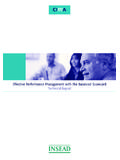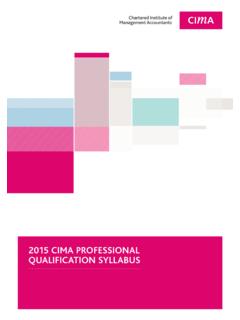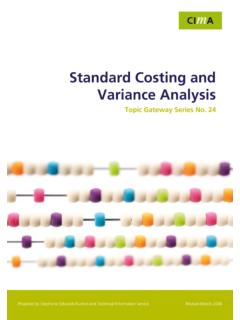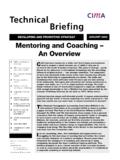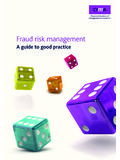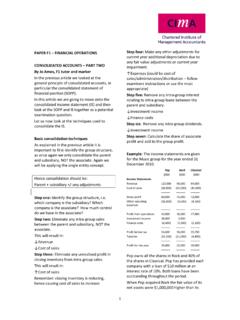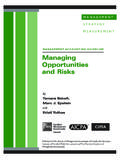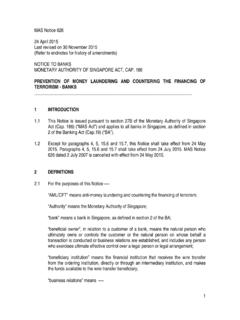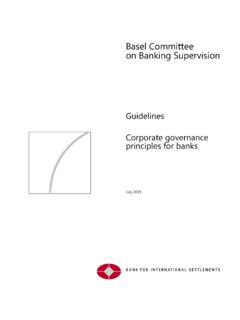Transcription of Fraud and Money Laundering - CIMA
1 Fraud and Money Laundering Topic Gateway Series Fraud and Money Laundering Topic Gateway Series No. 31 1 Prepared by Martin Nimmo and Technical Information Service June 2007 Fraud and Money Laundering Topic Gateway Series About Topic Gateways Topic Gateways are intended as a refresher or introduction to topics of interest to CIMA members. They include a basic definition, a brief overview and a fuller explanation of practical application. Finally they signpost some further resources for detailed understanding and research.
2 Topic Gateways are available electronically to CIMA members only in the CPD Centre on the CIMA website, along with a number of electronic resources. About the Technical Information Service CIMA supports its members and students with its Technical Information Service (TIS) for their work and CPD needs. Our information specialists and accounting specialists work closely together to identify or create authoritative resources to help members resolve their work related information needs. Additionally, our accounting specialists can help CIMA members and students with the interpretation of guidance on financial reporting, financial management and performance management, as defined in the CIMA Official Terminology 2005 edition.
3 CIMA members and students should sign into My CIMA to access these services and resources. The Chartered Institute of of Management Accountants 26 Chapter Street London SW1P 4NP United Kingdom 2 T. +44 (0)20 7663 5441 F. +44 (0)20 7663 5442 E. Fraud and Money Laundering Topic Gateway Series Definition Money Laundering is defined as: The funnelling of cash or other funds generated from illegal activities through legitimate financial institutions and businesses to conceal the source of the funds. Anti- Money Laundering , 2nd ed.
4 , IFAC, 2004 Fraud is a general term for deliberate misrepresentation and may include Money Laundering . The problems of Fraud and especially Money Laundering are increasing at an unprecedented rate. Governments worldwide are introducing new legislation and penalties for such white collar crimes. However, the huge amounts of Money involved in these illegal activities ensure that criminals continue to exploit ways of increasing their activities. They clearly weigh up the potentially vast profits against their chances of being caught and the subsequent penalties. Context It is a fact that legitimate financial institutions and businesses may be involved in Fraud and Money Laundering .
5 It is therefore crucial that CIMA members, whether in practice or in business, are fully aware of this possibility and are alert to the signs of Money Laundering which can affect their business. Examination candidates should be aware of the risks involved, especially at strategic and TOPCIMA level. They should ensure that they know the signs of possible Money Laundering and the steps they must take to report it. 3 Fraud and Money Laundering Topic Gateway Series 4 Overview There are a number of ways in which criminals commit financial Fraud . Very often this involves stealing another person s identity.
6 Identify theft Identity theft (including e- Fraud and phishing ) is a modern day Fraud and much is publicised about people whose assets have been stripped by personal identity theft. It is advisable for individuals to check their own personal credit reports regularly. However, there are increasing numbers of reported cases where the identities of companies have been hi-jacked. This occurs through unauthorised changes to the registered address of the company or to directorships. These crimes are not just a financial risk to the companies concerned, but a reputational risk which may damage the business for an appreciable amount of time.
7 The Fraud Act 2006 came into force on 15 January 2007 . This created a new offence of Fraud , which can be committed in three ways: by making a false representation (with intent to make a gain, cause loss or risk of loss to another) by failing to disclose information by abuse of position. It also became an offence to obtain services dishonestly, to possess equipment to commit frauds, and to make or supply articles for use in frauds. The Identity Cards Act 2006 created offences relating to the possession, control and intent to use false identity documents, including genuine documents that relate to another person.
8 Fraud and Money Laundering Topic Gateway Series 5 Phishing The objective of 'phishing' is to obtain and use personal banking details. Potential victims receive an email purporting to be from a bank or building society, or these days commonly from eBay or PayPal. The email may state that there has been a breach of security or the person concerned needs to update their details. Alternatively, people may be told that they have made a purchase although they have not. They are then directed to a website that appears to be legitimate where they are asked to disclose their bank or personal details. If you receive any such message: do not reply to it do not pass any personal information by email or complete any forms asking for personal information delete the message.
9 Concerned individuals should contact the real company or organisation by post or telephone at a genuine address or number. Many companies that deal exclusively on the internet also have a help section which explains what you should do if you receive one of these emails. Examples of 'phishing' letters are also given. On 2 November 2005 the Times recorded that a fraudster who duped almost 200,000 from eBay customers using a 'phishing' scam had been jailed by Preston Crown Court. David Levi of Lytham, Lancashire, led a gang that amassed a fortune by stealing account details from users and assuming their identities.
10 It is believed to have been the first successful prosecution for 'phishing'. Individuals should purchase appropriate computer software to protect them from this type of attack. Anti-spyware and personal firewalls are ideal, and anti-virus software will give a measure of protection against 'phishing'. Cash back Fraud Cash back Fraud may result when an individual offers something for sale on the internet, Exchange and Mart or even the small ads in a local paper. They may be contacted by a 'buyer' who wants to purchase the advertised item without wanting to see it. Fraud and Money Laundering Topic Gateway Series 6 The seller then receives a cheque for considerably more than the asking price, and is asked to send some or all of the difference to the buyer or shipping agent by Money transfer (usually Western Union).

